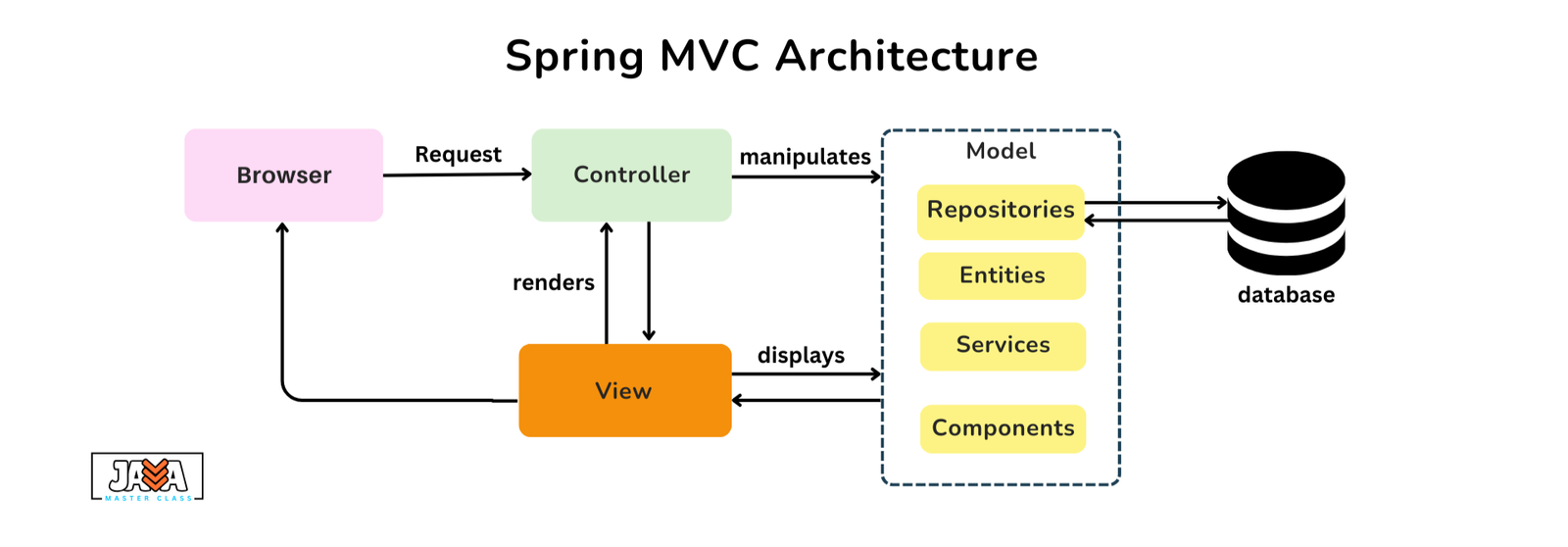Spring MVC (Model-View-Controller) is a powerful framework that helps in developing web applications using the principles of separation of concerns. It divides the application into three components: Model, View, and Controller, each handling distinct roles in the application.

Components of Spring MVC
- Model: Represents the data or business logic of the application. It can be a simple POJO (Plain Old Java Object) or a complex business model. The model is responsible for interacting with the database or other data sources.
- View: The View is responsible for rendering the user interface. It can be in the form of JSP, HTML, or other templating technologies. The view displays the model data to the user in a structured format.
- Controller: The Controller acts as an intermediary between the Model and View. It processes user inputs, performs necessary actions (like calling business logic), and returns a response. In Spring MVC, the controller is typically a class annotated with
@Controllerand it handles requests mapped by specific URL patterns.
Flow of Spring MVC
- Client Request: The user sends an HTTP request to the application.
- DispatcherServlet: The request is received by the
DispatcherServlet, which is the front controller in Spring MVC. It dispatches the request to the appropriate controller. - Controller: The controller processes the request, interacts with the model if needed, and returns a ModelAndView object, which contains both the model data and the view name.
- View Resolver: The View Resolver maps the logical view name returned by the controller to an actual view (like a JSP or HTML page).
- Render Response: The view is rendered and sent back to the client as an HTTP response.
Advantages of Spring MVC
- Separation of Concerns: MVC divides the application into distinct roles, making it easier to maintain and scale.
- Flexibility: Supports multiple view technologies like JSP, Thymeleaf, and FreeMarker.
- Testability: The loose coupling of components makes testing individual parts of the application easier.
